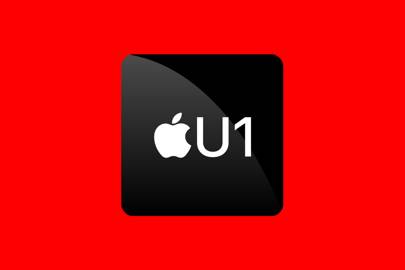
Despite much fanfare around its other recent silicon creations, Apple didn’t give any stage time to its new U1 chip when it was introduced in September 2019 alongside the iPhone 11. The chip didn’t didn’t get much press coverage, either – in part because it is currently used only for the company’s local file-sharing system, AirDrop.
But in space-limited handsets like the iPhone, a new component isn’t introduced unless it has a significant role to play: the U1 chip could be the basis for applications that will be core to future Apple products and services.
The U1 utilises a wireless technology called ultra-wideband (UWB), which Apple dubs “GPS at the scale of your living room”. This technology is similar to WiFi, but it operates in a different range of frequencies that will generally see less interference and therefore increased performance. It sends a rapid series of pulses over a wide spectrum to other UWB-enabled devices nearby to determine their exact positions, and to transfer large amounts of data – much more than is possible with the more common Bluetooth standard.
Ultra-wideband isn’t new; it has been used in commercial and industrial contexts for decades, for example to tag boxes in vast warehouses for later retrieval. It is also in devices worn by professional athletes so that television broadcasts can track their positions for digital overlays and augmented reality replays. The U1 chip, however, marks the first time a mass-market device has included UWB.
Apple has been silent about its long-term plans for the chip, but researchers have found many applications for UWB. It was initially pitched to consumers (with little success) as a way to rapidly transfer large files to nearby personal devices, but the proliferation of smart home and location-based technologies has given it a new life.
For example, UWB could be used to unlock your automobile door when you approach it. While this is possible with other wireless technologies, UWB is significantly more accurate than, say, Bluetooth Low Energy – accurate enough to know which specific door you’re standing next to, so only that one is unlocked.
Leaks from Cupertino have indicated that Apple plans a competitor for Tile – the electronic tags you attach to valuables so you can locate them with an app. Because Tile products rely on Bluetooth LE, U1-equipped phones and locator tags would be more accurate at finding a precise location.
Researchers have also demonstrated that the underlying technology has powerful use cases in the world of augmented reality, in which Apple has invested heavily in recent years. CEO Tim Cook has said that he believes AR will become as profound as the introduction of the smartphone.
The U1 chip could help Apple’s mobile devices establish stronger, more reliable connections with one another in AR applications. It would allow two iPhones to always know where the other is in a multi-user AR experience, and its transfer speeds would let them talk to each other in ways that have not previously been practical.
This is not the first time Apple has thrown its weight behind a standard to try and push industry-wide adoption. Some prior efforts have succeeded; others have not. But if this one does gain momentum, Apple will not just have another differentiator for its developing AR platform; it will be out ahead of its competitors as new types of location-based and smart home apps gain in popularity.
Samuel Axon is senior reviews editor at Ars Technica
Coronavirus coverage from WIRED
😓 How did coronavirus start and what happens next?
❓ The UK’s job retention furlough scheme, explained
💲 Can Universal Basic Income help fight coronavirus?
🎲 Best video and board games for self-isolating couples





More Stories
What Makes Genuine Canon Ink Cartridges A Great Buy?
Computer Futures – Right Strategy to Let You Know Cloud Computing Technology
How Can I Watch Satellite TV On My Computer